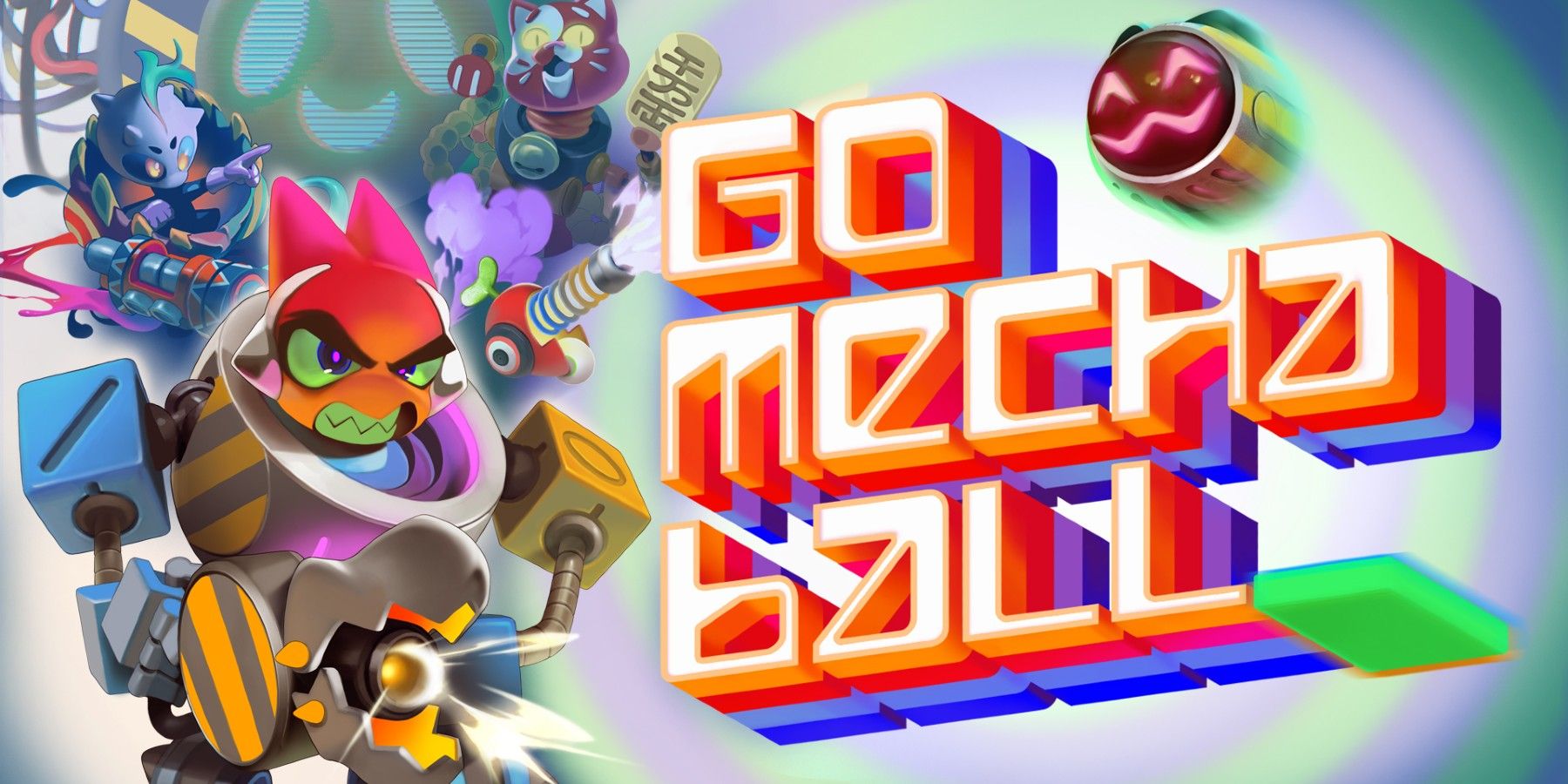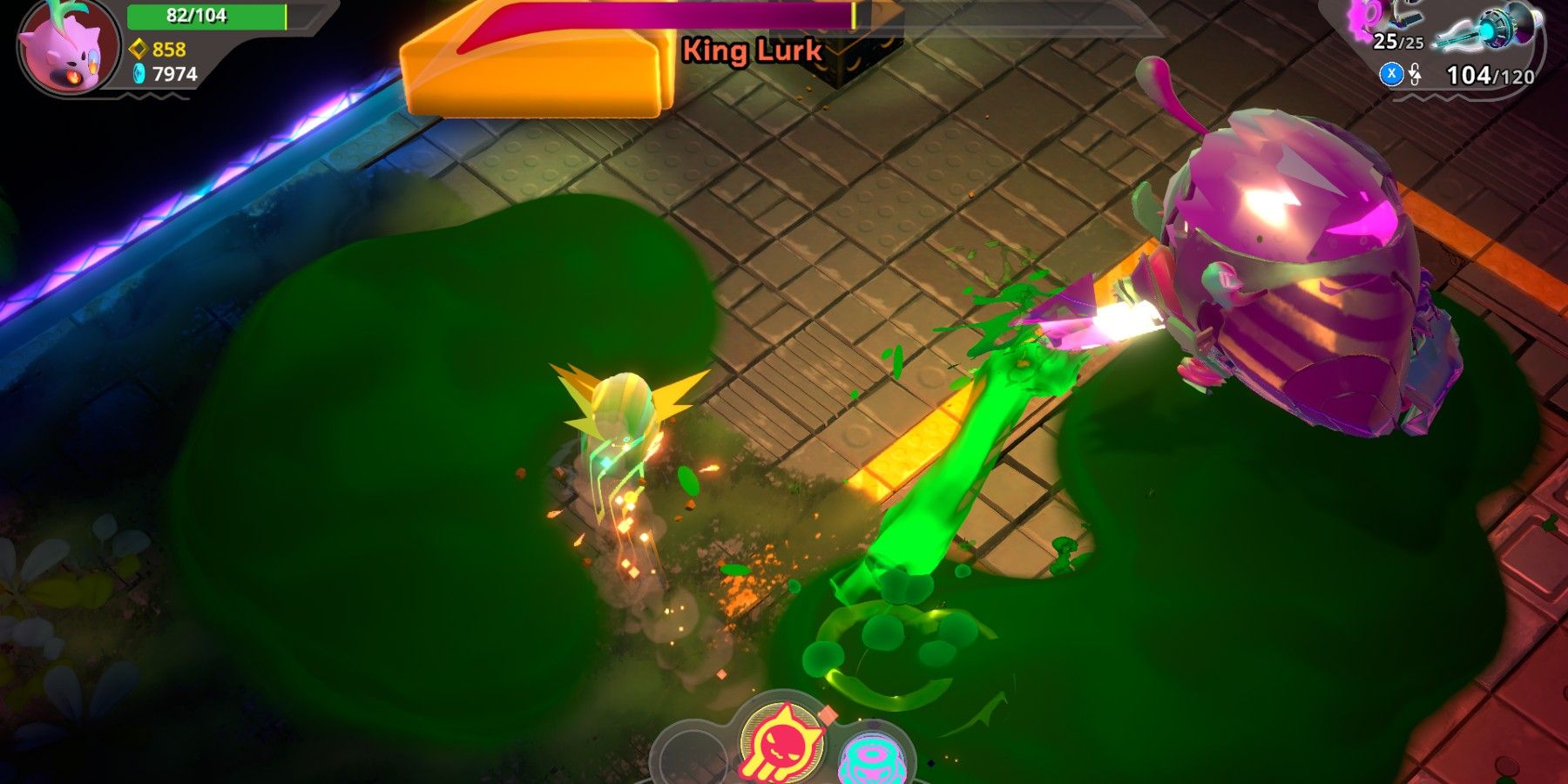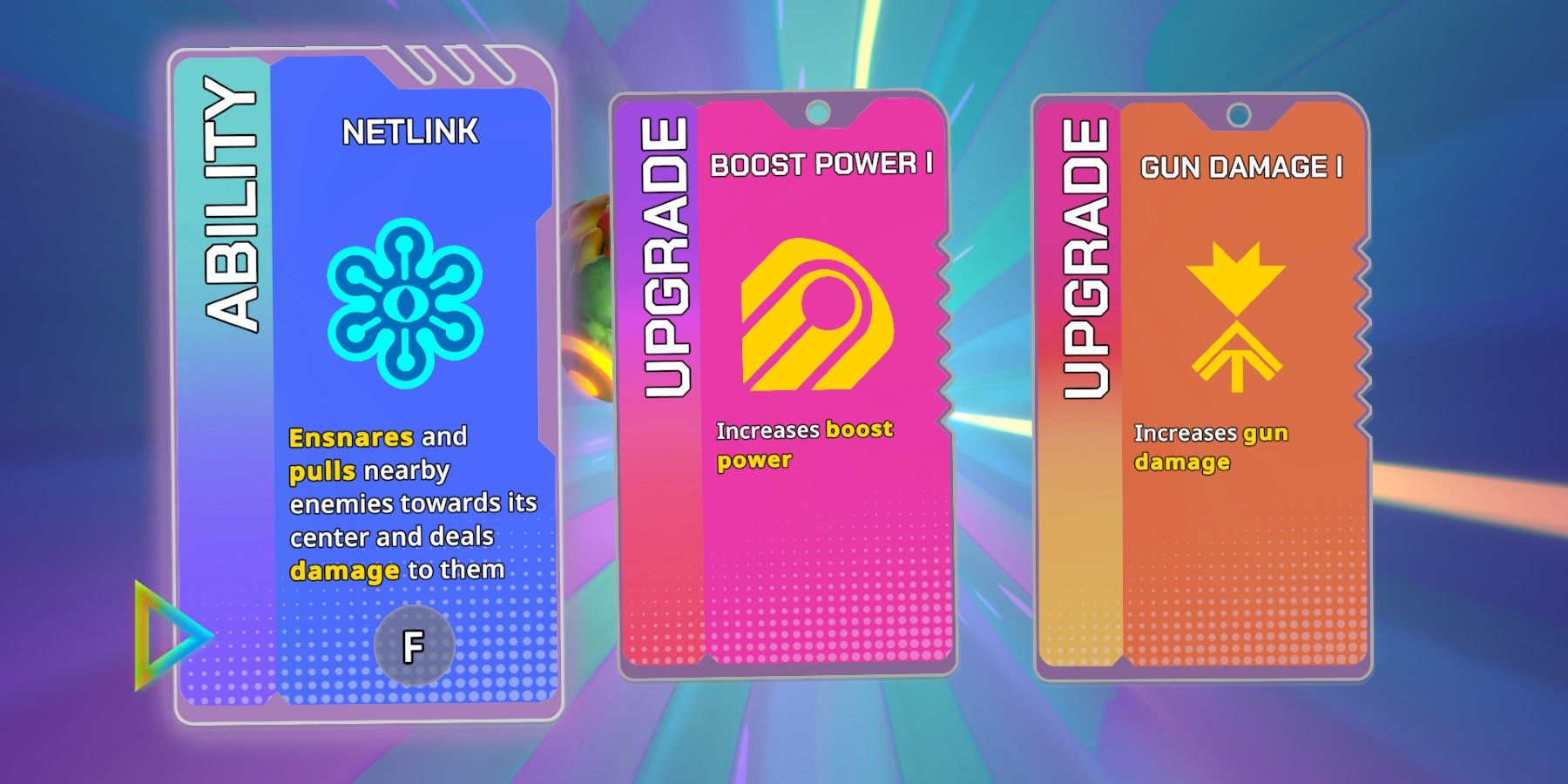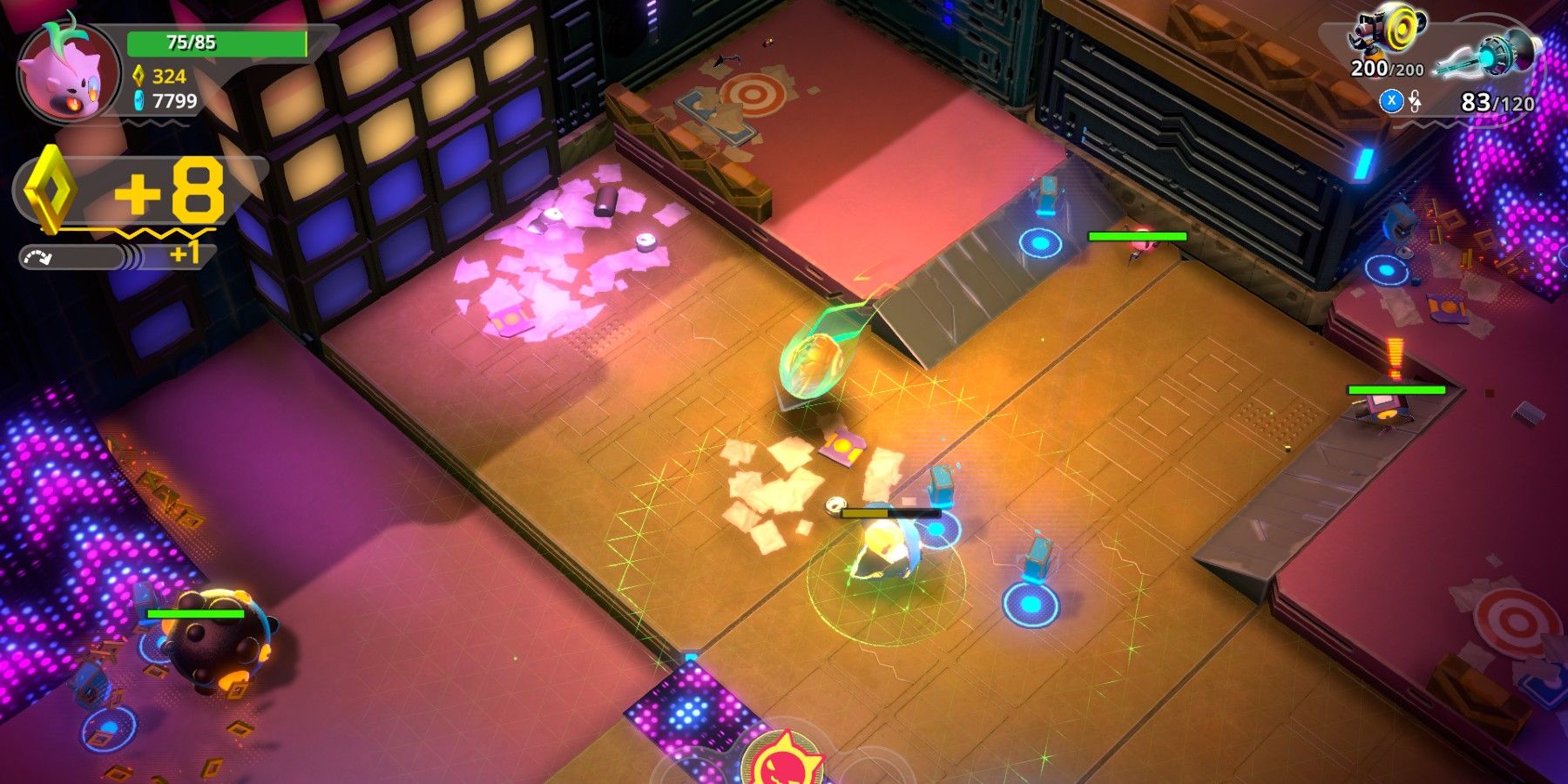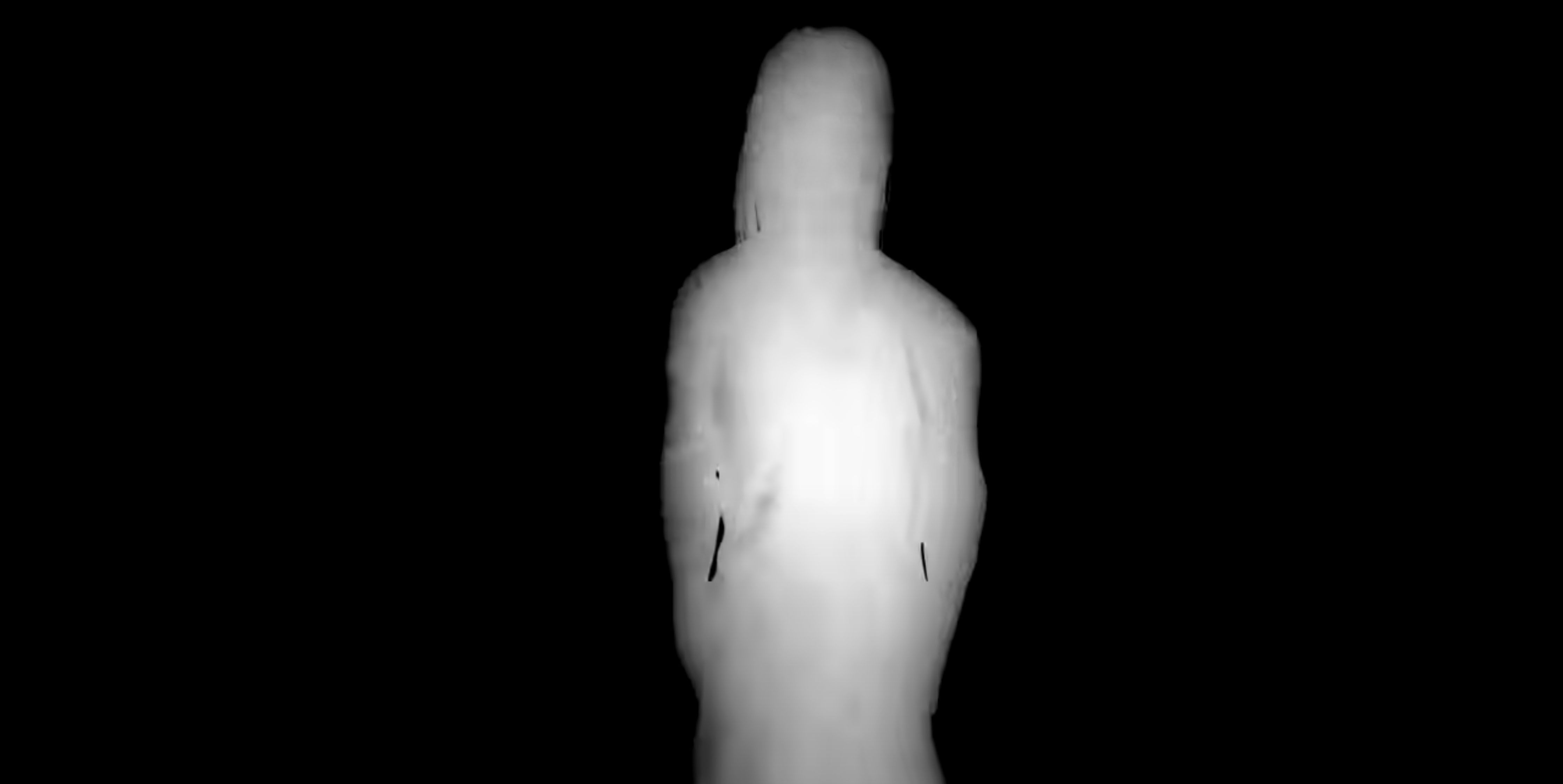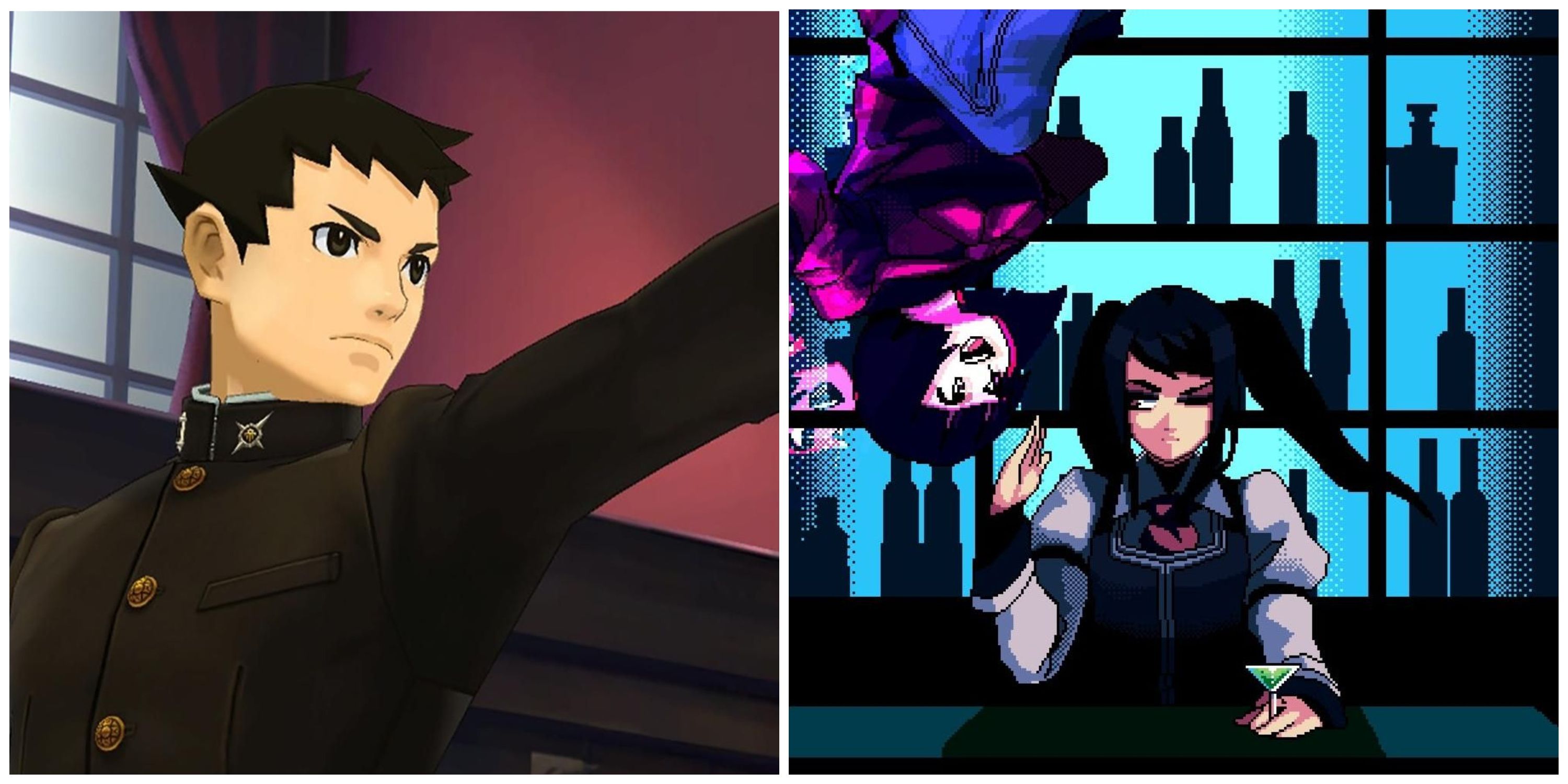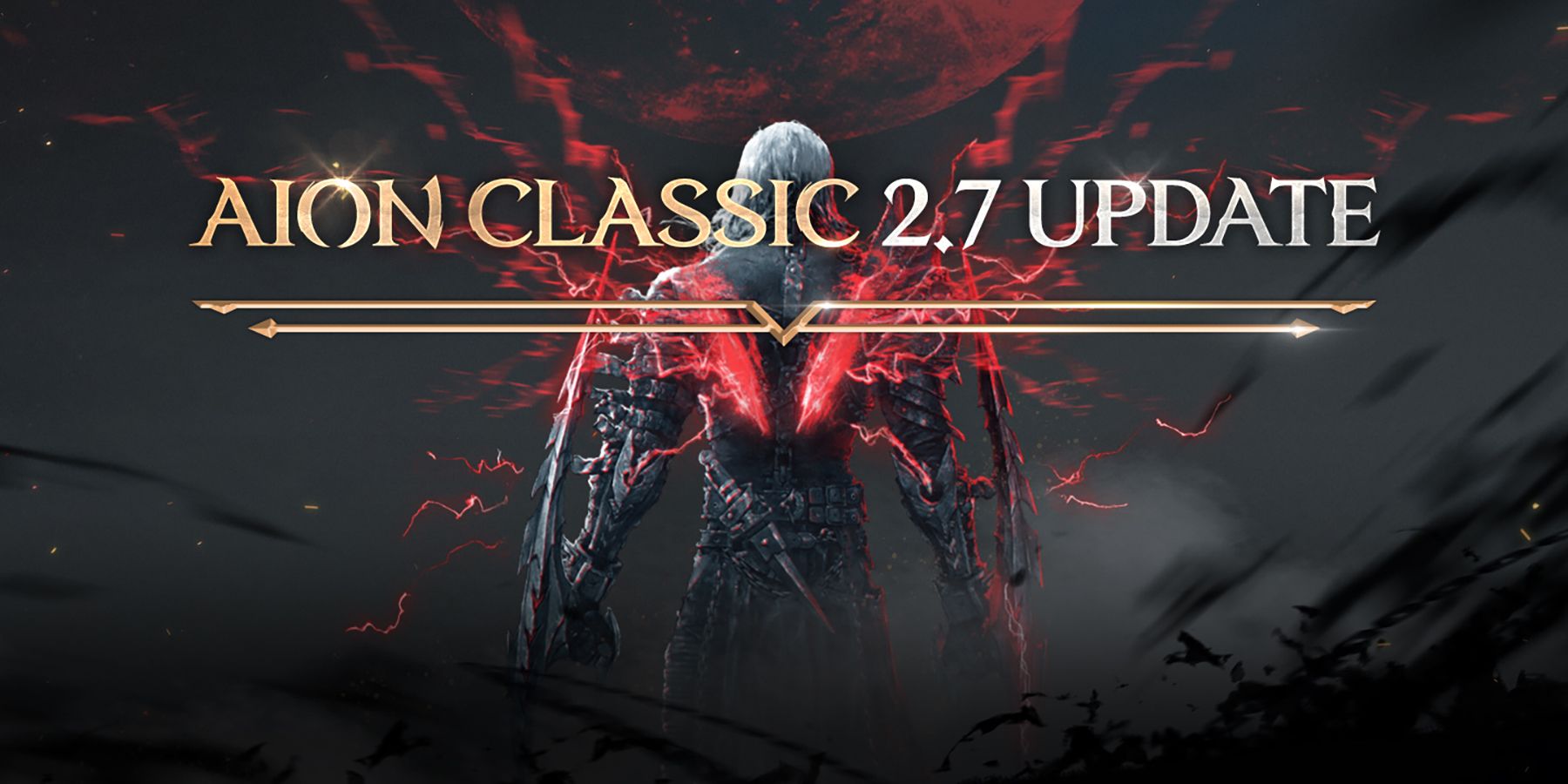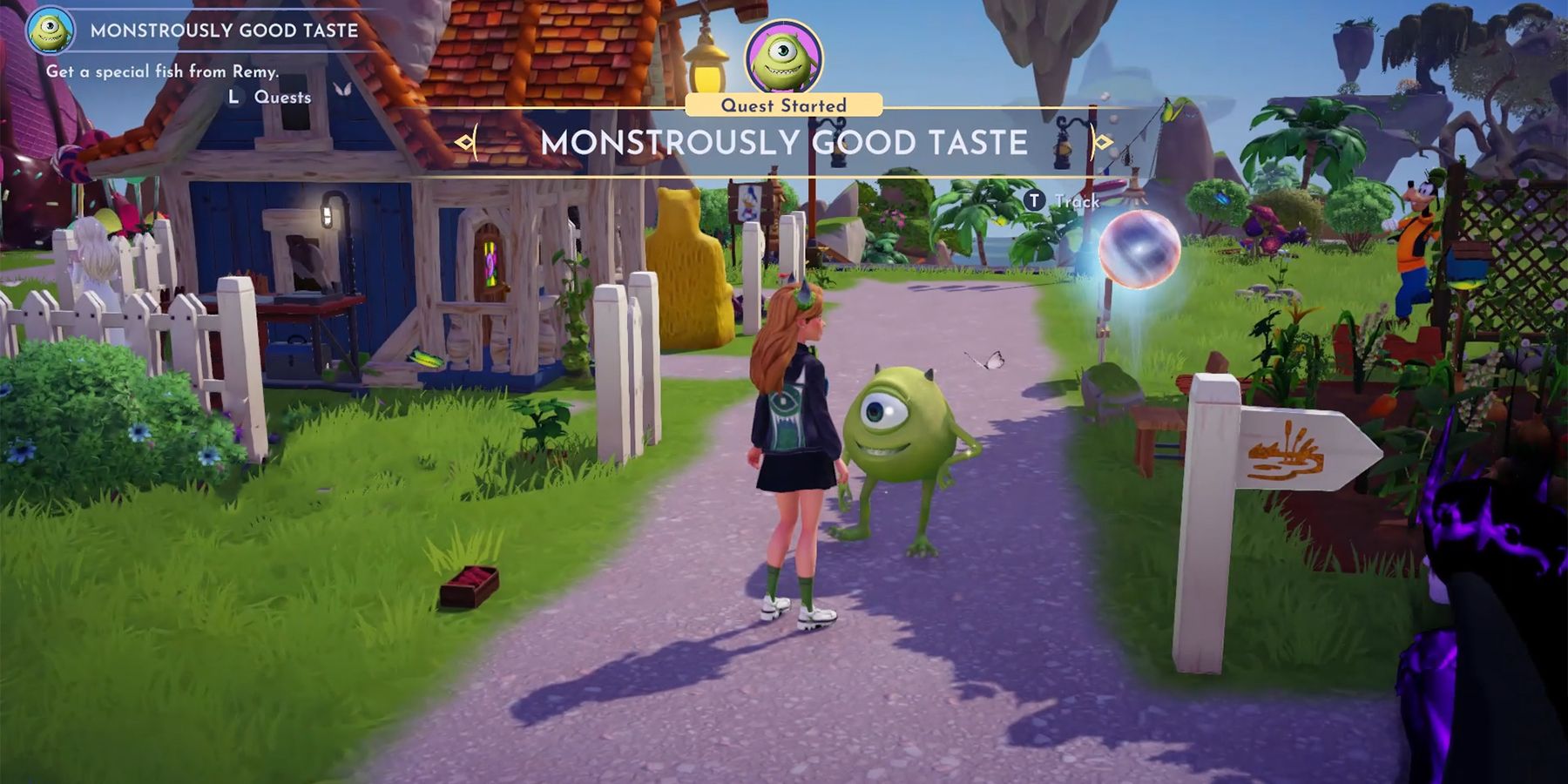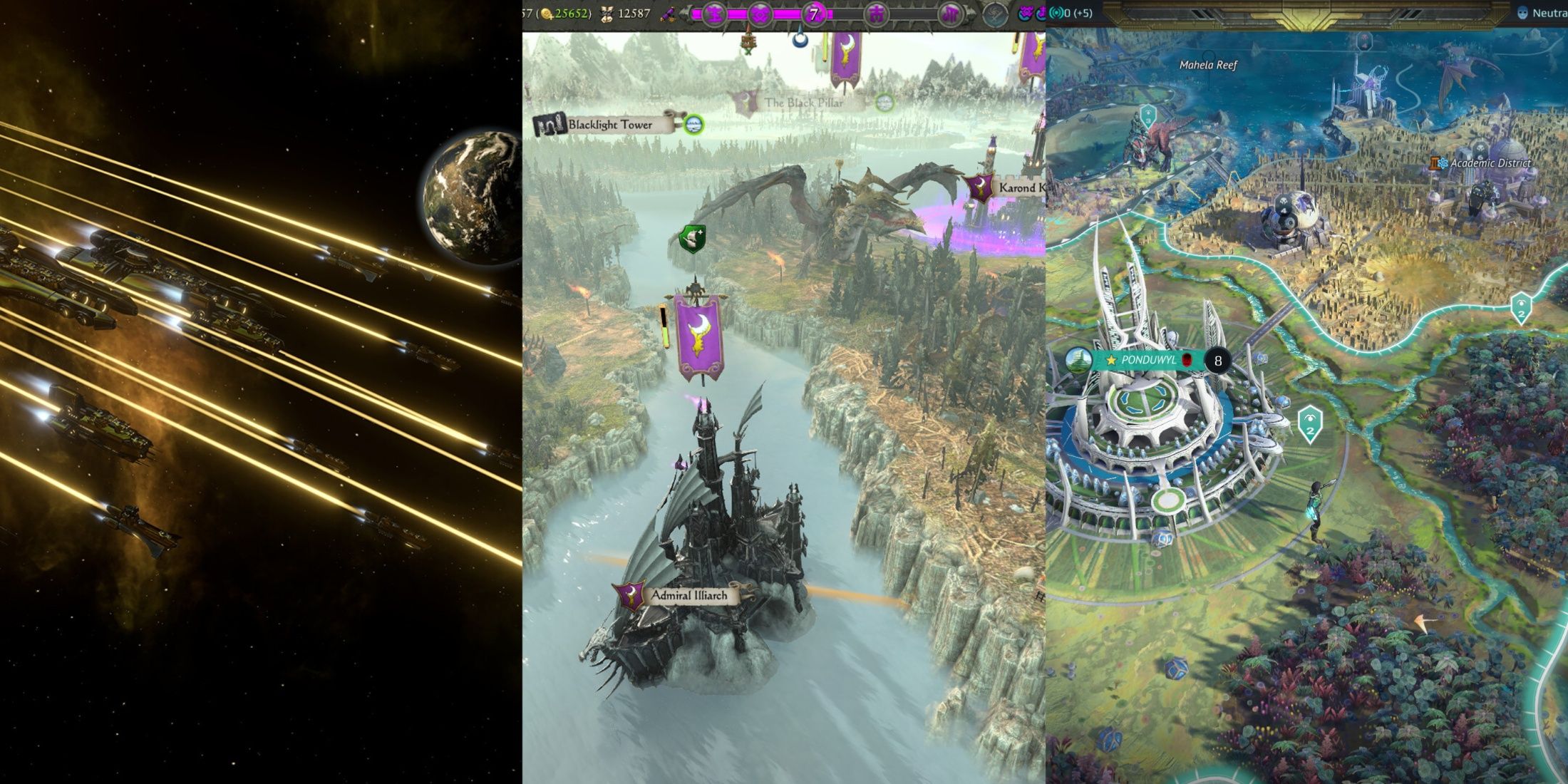In an improbable three-way union, Go Mecha Ball marries isometric twin-stick shooting, pinball, and rogue-like, and the results are as successful as the combination is unlikely. Go Mecha Ball‘s fusion is like no other, but it’s more than a novelty. It’s fast, smooth, and simple, never trying to be more than what it is. Each element complements the others, and the tools at the players’ disposal provide lots of opportunities to make each run different. Barring a few quality-of-life omissions that could have improved the rogue-like elements, Go Mecha Ball is an absolute blast to play.
There’s a scene from an early episode of the perpetually rebooted Futurama series. The Planet Express crew are taking in a blernsball game – the inevitable evolution of a sport that everyone eventually realized was a total snooze and was transformed l into an exciting and bizarre spectacle, barely resembling that which gave it birth. Responding to his friends’ decrying of the American pastime, Fry says “Boring!? Baseball wasn’t… Hm. So they finally jazzed it up.” Go Mecha Ball has finally jazzed up pinball, and it’s beautiful. Turns out all it needed was more guns.
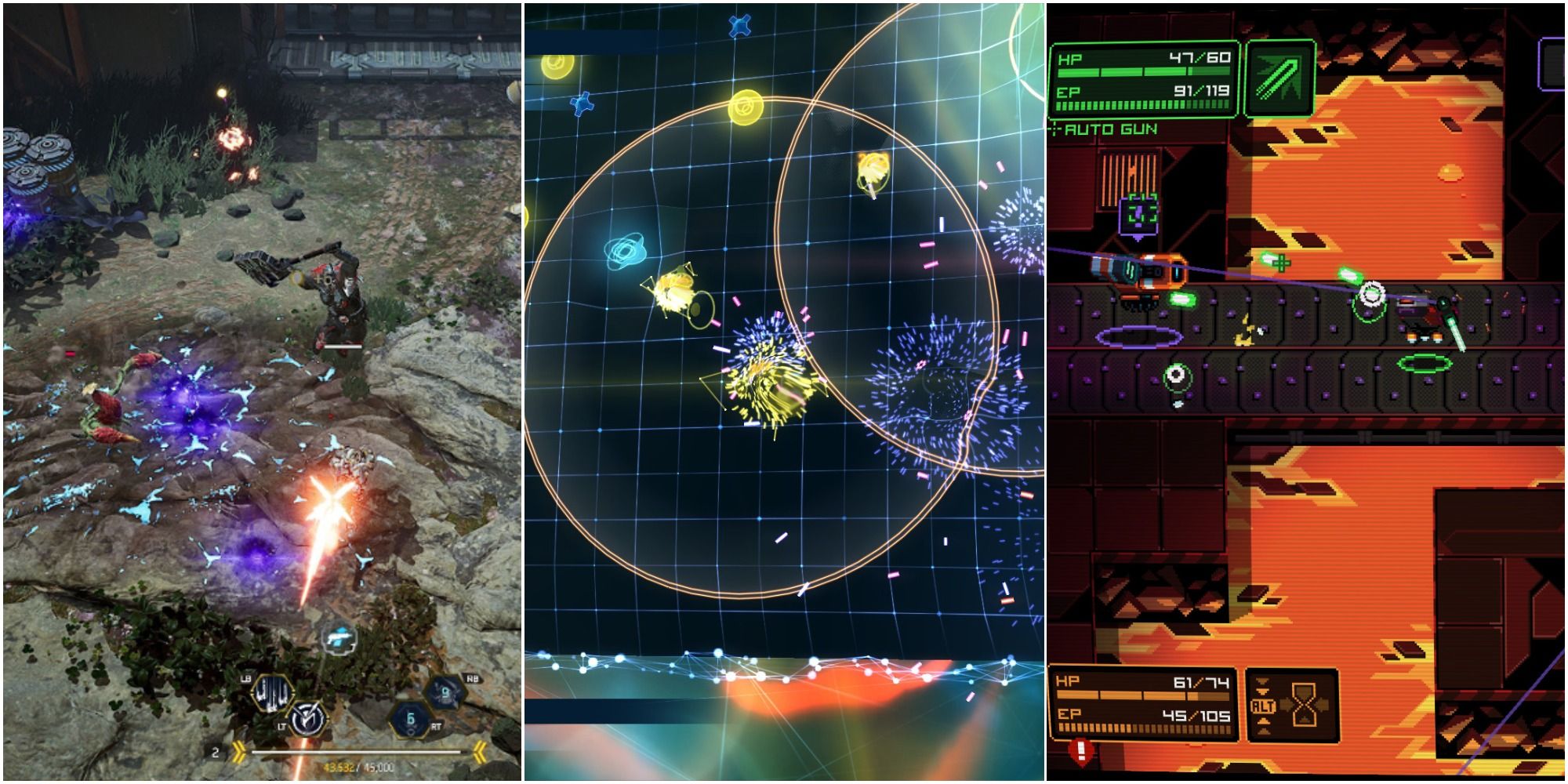
8 Best Twin Stick Shooters You Can Play On The Xbox Series X/S, Ranked
These great twin-stick shooters are the perfect throwback for retro gaming fans, available now on Xbox Series X/S.
The object of each level is simple: defeat all enemies. Players will constantly transition between shooting and rolling modes, encouraging brisk play. Switching is instantaneous, and characters are extremely mobile. It feels exactly like piloting a sentient pinball; it’s smooth and responsive with excellent directional control, both on the ground and in the air. An aiming reticule allows for precise shooting with mouse and keyboard, and controllers benefit from a slight aim assist. This keeps the focus on constant movement and action, rather than fiddling with precise targeting. All is in service of forward momentum.
Though it shares similar DNA, Go Mecha Ball doesn’t greatly resemble its kin, even including the best pinball video games. The levels are laid out with a variety of speed boosters, bumpers, and fans to help propel the ball along. Enemies can be shot, of course, but colliding with them is also very effective. While rolling, players can activate a recharging boost, which damages and, if timed properly, interrupts attacks. Environmental features can also be used to accelerate up to ramming speed. The more momentum, the better, as shooting, movement, and colliding all feed off each other, especially with the addition of upgrades.
After three waves, a portal opens and the level ends. Before the next level starts, players are given a choice of three advancement options consisting of upgrades or abilities. Upgrades are persistent, passive effects like increased gun damage or instant boost recharge on collision kills. Abilities are special attacks or utility moves, like sending out an EMP burst or dropping a turret. Players can have two abilities at once, and they can be hugely effective.
Go Mecha Ball is a Rogue-Like with Style
Enemies occasionally drop guns – Gatling, lasers, bouncing discs, and a ducky-shaped gun called the Quack 2 are among the many possibilities. There are also a total of four characters to unlock with varying stats and a starting upgrade. Character, guns, upgrades, and abilities make up the four pillars of a build. With foresight and a little luck, these elements can be combined to concoct some wildly destructive loud-outs. As in many good rogue-likes, the first couple of bonuses can inform the direction of a whole run. The aforementioned upgrade that instantly recharges boost works well with the collision damage upgrade. Pair those with a punchy, short-range gun and players will adopt an aggressive and relentless close-quarters combat style. Things don’t get incredibly in-dept, compared to something like the challenge run builds of Hades, but the relative simplicity works in its favor.
When it comes to the explicit function of certain upgrades, Go Mecha Ball isn’t always great at making itself understood. For example, one upgrade, Gun Damage Up, does just what it says, and another, Marksmen, increases both gun damage and critical hit chance. However, it is not clear how much the stats are increased. Marksmen seems like the better choice, but, for all the player knows, there could be a hidden trade-off: in exchange for boosting two stats instead of one, those stats may be increased to a lesser extent. Other games have set the precedent for trade-offs like this, so without more details, players are left guessing if faced with a choice between the two.
The focus on choice, customization, and experimentation is a big reason why fans never seem to get sick of rogue-likes. But information is essential because those choices can have a great influence on a run. Its lack in Go Mecha Ball feels intentional, as if the developer didn’t want players getting bogged down in stats. Though it succeeds, and thus helps preserve the game’s momentum, hints about the underlying numbers would be appreciated. Adding words like “slightly” or “greatly” to descriptions would give players a clue without having to directly reference stats or numbers. As it is now, there’s not always enough detail to guide players to an informed decision.
After three levels, a shop is available with three random purchase options: guns, abilities, upgrades, healing, or ammo. At that point, a boss is imminent. Climactic and challenging, each boss is unique. A rampaging spider accompanied by a horde of mobs is the first such beast, and an enormous, leaping robot spewing acid comes next. They follow patterns, of course, and they can be exploited, but the experience of uncovering those patterns and conquering them is incredibly exhilarating. Players will likely overcome the first few successful boss encounters by the skin of their teeth.
Those fights may be one of Go Mecha Ball‘s highlights initially, but their dazzle fades after the umpteenth encounter. That’s not due to the run-based model of rogue-likes either. It’s expected to face the same enemies repeatedly in the genre, but with Go Mecha Ball, the game follows the same fairly brief loop: three levels followed by a boss fight, repeated three more times. If all four bosses are bested, the run ends and a harder difficulty unlocks. Four difficulties are accessible, and there are some small differences, but Go Mecha Ball isn’t a better game on hard mode. Enemies seem to have larger health pools, particularly bosses, and each difficulty adds a trait that occasional foes are granted, like a metal casing which must be collided before guns work, or an aura that heals other enemies. But these do little to change the game in any meaningful way.
Boss Fights are Amazing But Replayability is Lacking
The three levels preceding each boss fight all share a theme or biome, like the dirty, metallic, sewer areas leading up to the acid boss. Their layouts are distinct from the other biomes, but they also remain almost exactly the same as difficulty progresses. Likewise, boss fights are nearly identical. Again, health pools seem to be the only difference here, with little to no apparent mechanical evolution. From the easiest to the second easiest difficulty, the enemies that accompany the spider boss change. Then, oddly, no such change happens again as difficulty increases. The recycled levels, enemies, and boss encounters make it all feel too static, as if the game is missing something. Without more interesting changes, the increased difficulty isn’t a very compelling reason to keep playing.
Luckily, the action is a compelling reason. The replayability of Go Mecha Ball comes purely from how much fun it is. A handful of ending scenes are available after multiple completions, but these cartoon-y, still images won’t rank among the best games with multiple endings, and the first completion on max difficulty unlocks a unique upgrade. But these rewards don’t amount to much. Nevertheless, players will likely pick up the game again and again because it just feels that good. Though imperfect,there’s simply nothing quite like Go Mecha Ball out there, and it deserves to be experienced.
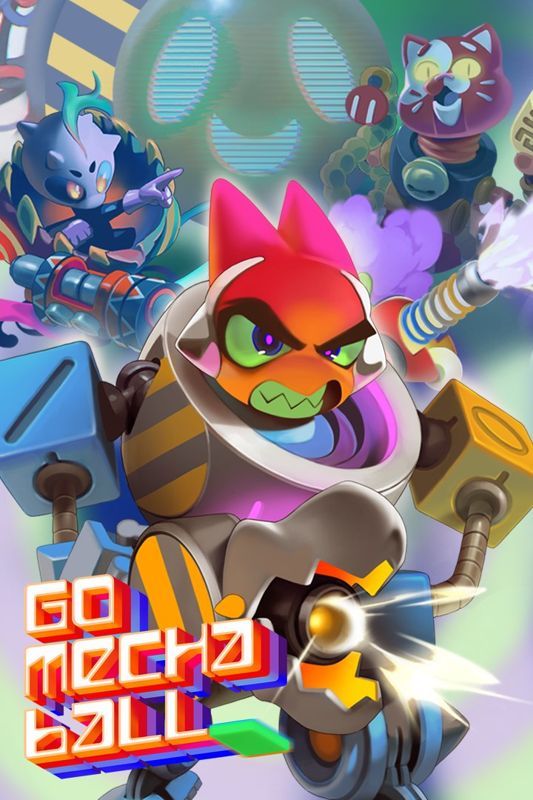
Go Mecha Ball
Blast your way through arcade-style levels, using pinball-style physics mixed with an arsenal of devastating weapons. Defeat waves of enemy bots, battle big bosses, and upgrade your mech between runs.
- Movement is fast paced and exciting
- Combat is consistently fun
- Boss battles offer unique twists on combat
- Upgrade benefits seem unclear
- No variety on higher difficulties
Go Mecha Ball is available now on PC, Xbox One, and Xbox Series X/S. Game Rant was provided a PC code for this review.


